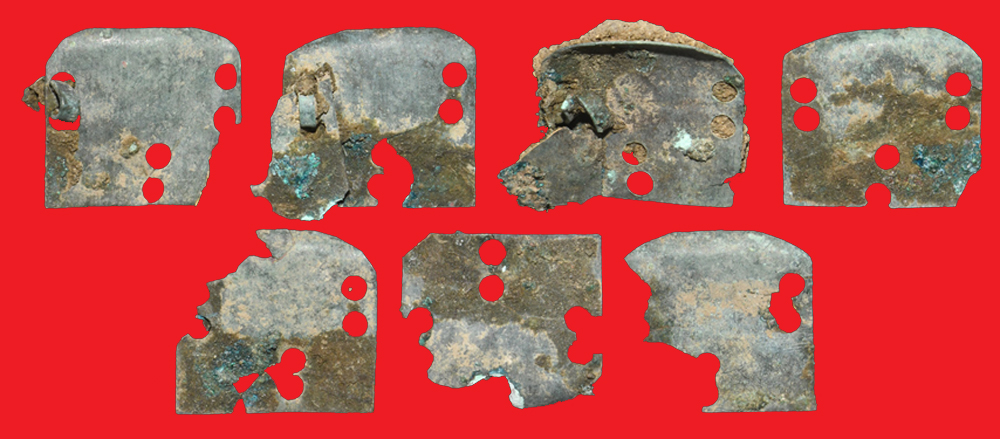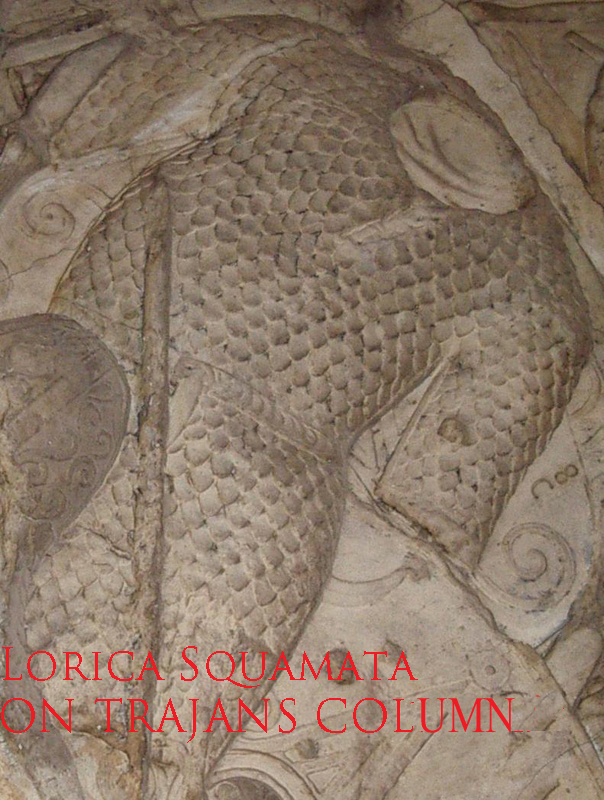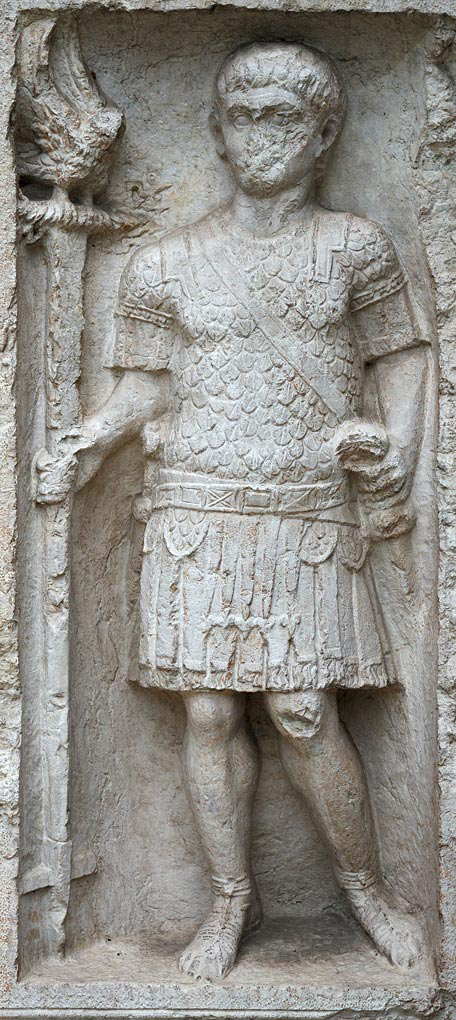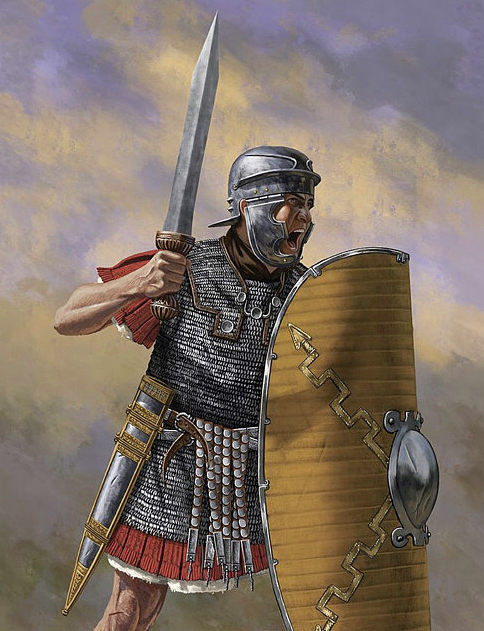Incredibly Rare To Survive, 2000 Years Old, Original, Republic & Imperial Roman Military, Legionary's or Centurion's Lorica Squamatae Mail Armour 1st Century
These are small integral pieces of original Roman combat armour, that once discovered have to be recognised for their rarity by such as an archaeologist or ancient Roman military historian or they would never be saved for history, and very likely discarded. Which would be one of the primary reasons that they are so very rare, that, and also because they are thin small plates that have to be originally lost in the correct organic surroundings within which to survive the past two millennia relatively intact.
A super, small collection of original, historical, Imperial Roman, Viking and Crusader's artefacts has just been acquired by us and will be added over the next week or so. Only the third such group of original Roman armour we have seen in 15 years.
A small section panel of an incredibly rare, original Roman military armour mail shirt, around 2000 years old, small pieces but exceptionally historically significant. They would look amazing if nicely framed. Used by both regular Roman Legionaries and high ranking Centurions, Lorica squamata was a scale armour, looking like the skin of a fish. Items such as this were oft acquired in the 18th century by British noblemen touring Northern France and Italy on their Grand Tour. Originally placed on display in the family 'cabinet of curiosities', within his country house upon his return home. A popular pastime in the 18th and 19th century, comprised of English ladies and gentlemen traveling for many months, or even years, througout classical Europe, acquiring antiquities and antiques for their private collections.
A shirt of scale armour would be put on with side or rear lacing and reach to the mid-thigh. The lorica squamatae is a type of scale armour used by the ancient Roman military during the Roman Republic and at later periods. It was made from small metal scales sewn to a fabric backing.
It is typically seen on depictions of standard bearers, musicians, centurions, cavalry troops, and auxiliary infantry, as well as regular legionaries. The somewhat historically inaccurate Roman victory triumph depicting Trajan's victory over the Dacians, the Tropaeum Traiani, shows the majority of legionaries wearing loricae squamatae. A shirt of scale armour was shaped in the same way as a mail lorica hamata, mid-thigh length with the shoulder doublings or cape.
The individual scales (squamae) were either iron or bronze, or alternating metals on the same shirt. They could be tinned as well, one surviving fragment showing bronze scales that were alternately tinned and plain. The metal was generally not very thick, 0.50 mm to 0.80 mm (.020" to .032") perhaps being a common range. Since the scales overlapped in every direction, however, the multiple layers gave good protection. The size ranged from as small as 6.3 mm wide by 9.5 mm tall (1/4" ? 3/8") up to about 5 cm wide by 8 cm tall (2" ? 3"), with the most common sizes being roughly 1.3 cm by 2.5 cm (1/2" ? 1"). Many have rounded bottoms, while others are pointed or have flat bottoms with the corners clipped off at an angle. The scales could be flat, or slightly domed, or have a raised midrib or edge. All the scales in a shirt would generally be of the same size; however, scales from different shirts may vary significantly.
The scales were wired or laced together in horizontal rows that were then laced or sewn to the backing. Therefore, each scale had from four to 12 holes: two or more at each side for wiring to the next in the row, one or two at the top for fastening to the backing, and sometimes one or two at the bottom to secure the scales to the backing or to each other.
There was also a rare type where the backing was a mail lorica hamata, effectively giving two layers of defence, but at the cost of greater weight and expense.
It is possible that the shirt could be opened either at the back or down one side so that it was easier to put on, the opening being closed by ties. Much has been written about scale armour's supposed vulnerability to an upward thrust, but this may be exaggerated.
No examples of an entire lorica squamata have ever been found, but there have been several archaeological finds of very small fragments of such shirts, and individual scales.
The type of armour in which the scales are laced to each other and need no backing at all is known as lamellar armour, while to confuse the matter there is also locking scale in which the scales are wired together without a backing. It can be difficult to tell which type of armour a single scale might have come from, as the Romans did not necessarily have different terms for each type. The typical scale had a vertical pair of holes at each side near the top, plus one or two holes at the top. These armour scales would look superb put together and framed in a display. They are individualy quite small and partially fragmented but easily dwarfed by their historical interest, rarity and significance. Their size and unusual appearance explains much why they are so rarely found, as they are easily corrupted by the centuries once buried, and only identifiable by those that know exactly what they are, thus easily discarded if discovered by the uninformed. As with all our items it comes complete with our certificate of authenticity.
Code: 23017
645.00 GBP






